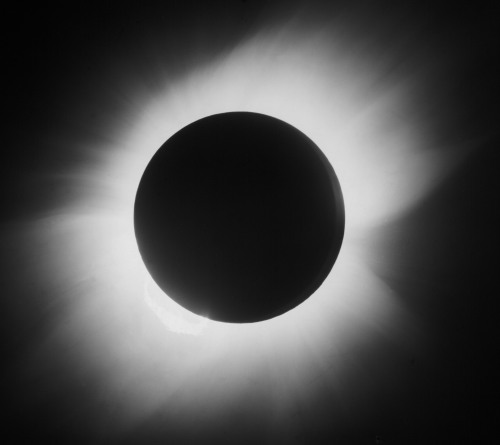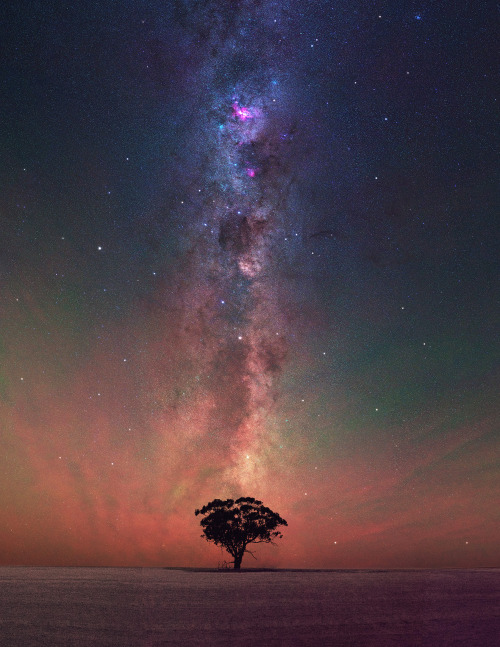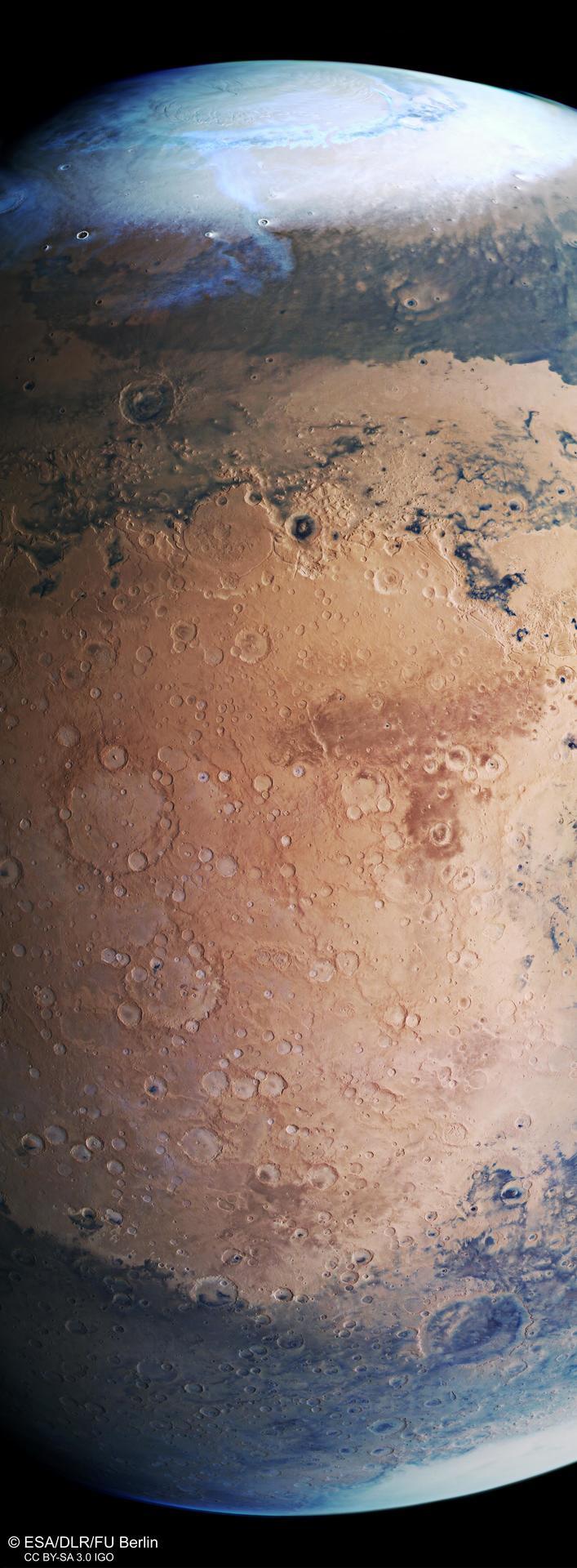Latest Posts by chbnb - Page 5

A beautiful sunset over Rekvik by Stan

Death Valley National Park by Jesse Graver

Traverse City, Michigan by Lenon James





humpback whale series by cam grant

Morning mist by Esa Ylisuvanto || Website



Happy Birthday, Albert Einstein! Genius Scientist Turns 140 Years Old Today.
The year 1905 came to be known as Einstein’s Miracle Year. He was 26 years old, and in that year he published four papers that reshaped physics.
Photoelectric effect
The first explained what’s called the photoelectric effect – one of the bases for modern-day electronics – with practical applications including television. His paper on the photoelectric effect helped pave the way for quantum mechanics by establishing that light is both a particle and a wave. For this work, Einstein was later awarded a Nobel Prize in physics.


Brownian motion
Another 1905 paper related to Brownian motion. In it, Einstein stated that the seemingly random motion of particles in a fluid (Brownian motion) was a predictable, measurable part of the movement of atoms and molecules. This helped establish the Kinetic Molecular Theory of Heat, which says that, if you heat something, its molecules begin to vibrate. At this same time, Einstein provided definitive confirmation that atoms and molecules actually exist.


Special relativity
Also in 1905, Einstein published his Special Theory of Relativity. Before it, space, time and mass all seemed to be absolutes – the same for everyone. Einstein showed that different people perceive mass, space and time differently, but that these effects don’t show up until you start moving nearly at the speed of light. Then you find, for example, that time on a swiftly moving spaceship slows down, while the mass of the ship increases. According to Einstein, a spaceship traveling at the speed of light would have infinite mass, and a body of infinite mass also has infinite resistance to motion. And that’s why nothing can accelerate to a speed faster than light speed. Because of Einstein’s special relativity, light is now seen as an absolute in a universe of shifting values for space, time and matter.

Mass-energy equivalence
The fourth 1905 paper stated that mass and energy are equivalent. You perhaps know something of this work in Einstein’s famous equation E=mc2. That equation means that energy (E) is equal to mass (m) multiplied by the speed of light © squared. Sound simple? It is, in a way. It means that matter and energy are the same thing. It’s also very profound, in part because the speed of light is a huge number. As shown by the equation, a small amount of mass can be converted into a large amount of energy … as in atomic bombs. It’s this same conversion of mass to energy, by the way, that causes stars to shine.
But Einstein didn’t stop there. As early as 1911, he’d predicted that light passing near a large mass, such as a star, would be bent. That idea led to his General Theory of Relativity in 1916.


This paper established the modern theory of gravitation and gave us the notion of curved space. Einstein showed, for example, that small masses such as planets form dimples in space-time that hardly affect the path of starlight. But big masses such as stars produce measurably curved space.





The fact that the curved space around our sun was measurable let other scientists prove Einstein’s theory. In 1919, two expeditions organized by Arthur Eddington photographed stars near the sun made visible during a solar eclipse. The displacement of these stars with respect to their true positions on the celestial sphere showed that the sun’s gravity does cause space to curve so that starlight traveling near the sun is bent from its original path. This observation confirmed Einstein’s theory, and made Einstein a household name.

Source (read more) posts about Einstein




Craters on Moon:
1° From crater Theophilus (100km diameter) below to crater Langrenus above.
2° From bottom to top, dark titanium rich lava in the Sea of Fertility then the diamond shaped patch is the Marsh of Sleep. Small bright crater Proclus is thought to be a recent impact crater and has thrown out bright ejecta that is much lighter than the surrounding ancient weathered rock. Above is the rather hexagonal Mare Crisium.
3° From the Sinus Iridium top left through the Mare Imbrium with the Alpine Valley in the centre. (This original image is horizontal)
4° At the middle and bottom of this image, sunlight is shining on a mountain peak in the Alexander crater which lies beyond the day/night terminator.
Image credit: John Purvis

Milky Way at Boddington, Western Australia
Nikon d5500 - 50mm - ISO 4000 - f/3.2 - Foreground: 7 x 15 seconds - Sky: 26 x 30 seconds - iOptron SkyTracker - Hoya Red Intensifier filter

NGC 7023, Iris Nebula

Carina Nebula Close Up. From NASA APOD.

Destination Earth. First light on the shore of Lake Michigan in Racine, Wisconsin.
Mathematician. Leader. Heroine. Remembering Hidden Figure Katherine Johnson
Tonight, count the stars and remember a trailblazer.

We’re saddened by the passing of celebrated #HiddenFigures mathematician Katherine Johnson. She passed away at 101 years old.

An America hero, Johnson’s legacy of excellence broke down racial and social barriers while helping get our space agency off the ground.

Once a “human computer”, she famously calculated the flight trajectory for Alan Shepard, the first American in space.

And when we began to use electronic computers for calculations, astronaut John Glenn said that he’d trust the computers only after Johnson personally checked the math.

As a girl, Katherine Johnson counted everything. As a mathematician, her calculations proved critical to our early successes in space travel.

With slide rules and pencils, Katherine Johnson’s brilliant mind helped launch our nation into space. No longer a Hidden Figure, her bravery and commitment to excellence leaves an eternal legacy for us all.
“We will always have STEM with us. Some things will drop out of the public eye and will go away, but there will always be science, engineering and technology. And there will always, always be mathematics.” - Katherine Johnson 1918 -2020
May she rest in peace, and may her powerful legacy inspire generations to come! What does Katherine Johnson’s legacy mean to you? Share in the comments.
Make sure to follow us on Tumblr for your regular dose of space: http://nasa.tumblr.com

The other side of the fence

The Moon... revealing its scars, its colours, its history, its strength, its hypnotic beauty, its pride, its majesty... Taken from my backyard, South of France.

The moon on November 8th 2019.










Milky Way Paradise by Ian Inverarity

Starburst Galaxy - Centaurus A (NGC 5128)

M43: Orion Falls : Is there a waterfall in Orion? No, but some of the dust in M43 appears similar to a waterfall on Earth. M43, part of the Orion Molecular Cloud Complex, is the often imaged but rarely mentioned neighbor of the more famous M42. M42, which includes many bright stars from the Trapezium cluster, lies above the featured scene. M43 is itself a star forming region and although laced with filaments of dark dust, is composed mostly of glowing hydrogen. The entire Orion field, located about 1600 light years away, is inundated with many intricate and picturesque filaments of dust. Opaque to visible light, dark dust is created in the outer atmosphere of massive cool stars and expelled by a strong outer wind of protons and electrons. via NASA

“I will never get tired of night hiking and photographing our Galaxy! The Milky over the Adirondacks in NY [OC][1393x2048]”
By Reddit user: u/DanielJStein

NGC 602 In The Flying Lizard Nebula
![A 2.5 Hour Exposure Of The Rho Ophiuchi Region From A Dark Sky Site [OC]](https://64.media.tumblr.com/1a5bff34ca113731e5f11b514c05a43b/ceae70b7e5f929a7-49/s500x750/bae71af47f92f5b6a94db6fcda8cf7a597bea482.jpg)
A 2.5 Hour Exposure of the Rho Ophiuchi Region From a Dark Sky Site [OC]

Summer Milky Way at Beverley, Western Australia Nikon d5500 - 50mm - ISO 3200 - f/2.8 - Foreground: 7 x 13s - Sky: 32 x 30s

A picture of the solar eclipse from the ISS

Milky Way over Canadian Forest, August 2019.

Cha moon... faithful, beautiful, powerful

Mars Express view of Mars Poles (incredible detail))


![Mars Reptilian Whale Or Complex Sand Dunes [557 X 1443]](https://64.media.tumblr.com/3117b484ee053406d39435fffd394d9c/tumblr_pzgsserDi21ve10t6o1_1280.jpg)
Mars reptilian whale or complex sand dunes [557 x 1443]

Mineral Moon by Astrophotographer Andrew McCarthy

Just wow
